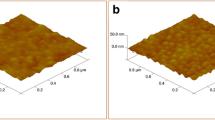Abstract
Highly specific detection of human α1-acid glycoprotein (AGP) and asialo-α1-acid glycoprotein (asialo-AGP) was made possible by use of a sandwich immunoassay. The glycoproteins were sandwiched between biotinylated and fluoresceinated polyclonal rabbit anti-human AGP antibodies. Additionally, asialo-AGP could be distinctly detected, apart from AGP, via the formation of a heterosandwich immunoassay using biotinylated polyclonal rabbit antihuman AGP and the lectin, fluoresceinated ricin toxin. Streptavidin was added to the formed immunocomplexes and the immunocomplexes captured on a biotinylated nitrocellulose membrane. The signal generator, urease conjugate of an anti-fluorescein antibody, was then bound to the complex on membrane. The rate of pH change under microvolume conditions (0.6 µl) was monitored using a silicon chip-based, light addressable potentiometer sensor. Results indicated that AGP and asialo-AGP can be detected to the 2 pg level when two antibodies are used to form the immunocomplex. Asialo-AGP can be detected down to 250 pg when the heterosandwich immunoassay is used; this assay exhibited no response up to 10 ng for native AGP or asialofetuin. Both immunoassays can be used to quantify the level of AGP and asialo-AGP in solution. Although the assay presented is very specific for AGP, asialo-AGP and terminal galactose, it is readily adaptable for the detection of any glycoprotein and terminal carbohydrate (or branched structure) by use of a protein-specific antibody and various lectins.
Similar content being viewed by others
References
Nose M, Wigzell H (1983)Proc Natl Acad Sci USA 80: 6632–36.
Tsuchiya N, Endo T, Matsuta K, Yoshinoya S, Aikawa T, Kosuge E, Takeuchi F, Miyamoto T, Kobata A (1989)J Rheumatol 16: 285–90.
Wawryznczak WJ, Parnell GD, Cumber AJ, Jones PT, Winter G (1989)Biochem Soc Trans 17: 1061–62.
Heyman B, Nose M, Weigle WO (1985)J Immunol 134: 4018–23.
Dorai H, Mueller BM, Reisfeld RA, Gillies SD (1991)Hybridoma 10: 211–17.
Wawrynczak EJ, Cumber AJ, Parnell GD, Jones PT, Winter G (1992)Molec Immunol 29: 213–20.
Werner RG, Noe W (1993)Arzneim-Forsch/Drug Res 43 (II): 1242–49.
Parekh RB (1994)Biologicals 22: 113–19.
Dossett RFE, Merry A, Hardy M (1995)Biochem Soc Trans 23: 103S.
Flesher AR, Marzowski J, Wang W-C, Raff HV (1995)Biotech Bioeng 46: 399–407.
Sofer G (1995)Current Opin Biotech 6: 230–34.
Dill K, Lin M, Poteras C, Fraser C, Hafeman DG, Owicki JC, Olson JD (1994)Anal Biochem 217: 128–38.
Panfili PR, Dill K, Olson JD (1994)Current Opin Biotech 5: 60–64.
Dill K, Olson JD (1995)Glycoconj J 12: 660–63.
Shiian SD, Nasnov VV, Bovin NV, Aleshkin VA, Novikova LI, Liutov AG (1994)Bioorg Khim 20: 1125–31.
De Graaf TW, Van der Stelt ME, Anbergen MG, van Dijk W (1993)J Exp Med 177: 657–66.
Mackiewicz A, Dewey MJ, Berger FG, Baumann H (1991)Glycobiology 1: 265–69.
Hermentin P, Witzel R, Doenges R, Bauer R, Haupt H, Patel T, Parekh RB, Brazel D (1992)Anal Biochem 206: 419–29.
Treuheit MJ, Costello CE, Halsall HB (1992)Biochem J 283: 105–12.
Treuheit MJ, Halsall HB (1991)Chromatographia 31: 63–67.
Gottschalk A (ed.), (1972)Glycoproteins, Their Composition, Structure and Function, Vol. 5. Amsterdam: Elsevier.
Author information
Authors and Affiliations
Rights and permissions
About this article
Cite this article
Dill, K., Bearden, D.W. Detection of human asialo-α1-acid glycoprotein using a heterosandwich immunoassay in conjunction with the light addressable potentiometric sensor. Glycoconjugate J 13, 637–641 (1996). https://doi.org/10.1007/BF00731452
Received:
Revised:
Issue Date:
DOI: https://doi.org/10.1007/BF00731452




